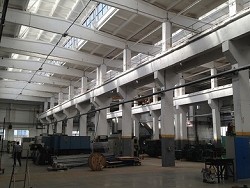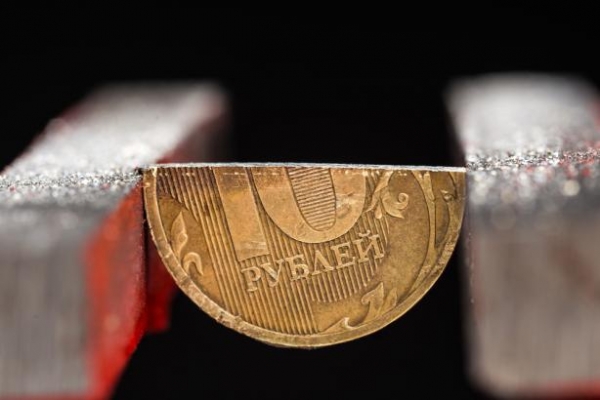
Despite the reports of the officials that the Russian military industrial complex rising from its knees, our country supplies abroad weapons worth four times less than the exports of footwear from China.
The Russian leadership for the second consecutive year reports on the unprecedented success of Russian arms exports. More recently, Vladimir Putin said that in 2015, managed to surpass the plan to export, the volume of which amounted to$14.5 billion, and by July 2016, the exports, according to the President, has reached $4.6 billion.
Indeed, over the past 10 years, the export of arms from Russia has doubled; Russia occupies the second place after the USA in the global arms market, controlling 25-27% of the market, and is the largest supplier of weapons to countries such as India, China, Algeria, Vietnam, Venezuela and Syria.
It would seem that the policy of “raising from knees” the military-industrial complex really came to fruition, and Russia have learned to earn what she can do, not just to pump out of the ground.
However, if you look closely, it turns out that the export of arms is not the most profitable business.
And the cost of its support from the state during the crisis does raise questions about the knowledge in the arithmetic of individual officials.
In the structure of Russian exports last year, the export of arms is всего4.2%, roughly the same as exports of ferrous metals (3,8%), or two times less diesel fuel and 11 times less export of oil and oil products. Although in reality the share of arms exports last year were a record high due to the overall reduction of exports from Russia more than a third – for example, in 2013, it occupied only 2.8%.
To understand the global context: Russia sells many weapons as France perfumes and cosmetics, two times less than the US sell soybeans, and whatare times less than China shoes. If you compare the arms exports of other manufactured goods, the contrast becomes even more striking. Germany, the market leader of automotive annually sells cars amount 11 times greater than the Russian arms exports. If Russia with tanks and planes instead of “Lada Kalina” and “UAZ Patriot” to place in the top 20 largest exporters of cars, we will all be a little more successful Slovakia (12). Although the Czech Republic (11) have to go — the gap is $1.5 billion not in our favor.
Last year, China earned 20 times more by selling computers and cell phones than Russia for selling weapons, and only the export of air conditioners from China is comparable with our achievements – $13.2 billion
If the entire Russian exports of arms to put in the context of corporate sales, it will be about three times less than sales of beer to the Belgian Anheuser-Busch InBev, clothing Chrisitan Dior French or Swedish Ikea furniture. American Apple and Walmart exceed the revenues from the sale of Russian arms 16 and 33 times respectively.
The most famous Russian military brand (and maybe the most famous military brand in the world) – “Kalashnikov” in 2015, experienced a “new birth.”
In 2014, sales of the concern “Kalashnikov” has grown by 170% and by the end of the year amounted to about $105 million. However, on a global scale this is a very modest result.
For comparison, the manufacturer of Tampax Pearl pads on only one of the American market over the same period earned nearly $288 million.
However, the problem lies not in the fact that against Russian goods are “unfair competition”, as claimed by President Putin. The arms market is limited by definition, the demand simply can’t grow as a new Iphone or a Belgian beer. Weapons do not make a commodity of mass consumption, as if that would like Rogozin or Chemezov.
Of course, we can assume a significant escalation of tension in the world, the increase in regional conflicts, and thus the growth of demand for the Kalashnikovs and armored personnel carriers. Another question is how the warring parties will be solvent. If you remove from the list of buyers of Russian arms to China and India, will remain the country that Russia has ever written off the debt, usually issued by it for the purchase of weapons. For all the Putin era (from 2000), Russia has written off to “friends” of debts amounting to nearly $20 billion in excess of total arms exports last 15 years.
Despite the fact that such results are unlikely to impress anyone, the Russian budget had a one time strain to make this charge a reality. The secret of success is that the arms export today — is not the main source of income for the Russian defence industry.
The state defense order, together with a state guarantee for loans provide the most favorable environment in which there is no other Russian manufacturer. In 2007, the state defense order (SDO) was only 300 billion rubles, in 2014 it grew to 1.9 trillion rubles and amounted to about 80% of the revenues of the defense industry, leaving only one fifth for export.
Crisis 2015 the SDO even declined, but by only 5% — and he still almost two exceeds spending on education and health in 2016.
Could the Russian military-industrial complex to increase exports without significant government support is an open question. As an open question how justified the spending of such resources for the sake of $15 billion in annual profits. One thing is clear: the Russian weapons are unlikely ever will be a global breakthrough for the export of goods with the label “made in Russia”. But while the country is dominated by militarism as fashion and political trend, we will continue to hear about the next “fulfillment plan” and “capture the market”.








